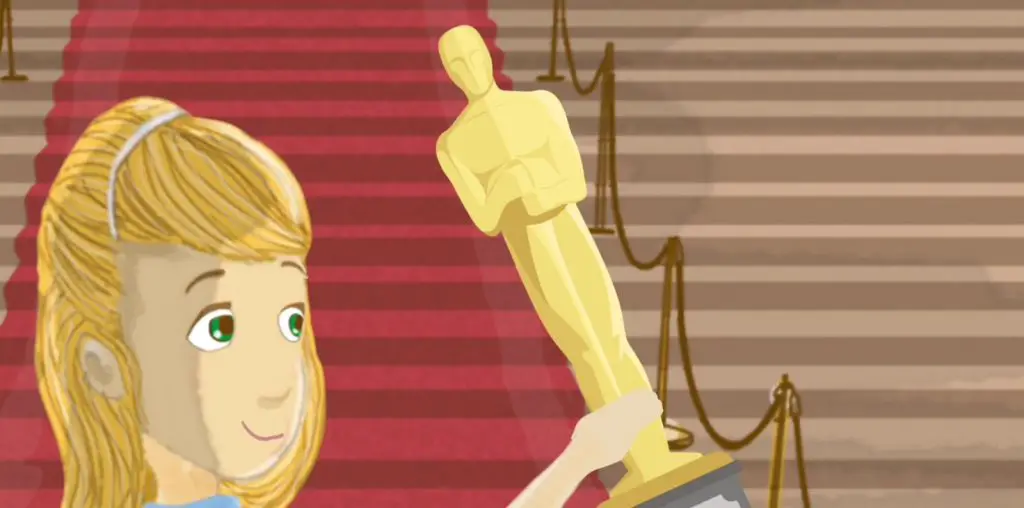
Writer-director Andrew Gorzalski demonstrates in his short black comedy “Wake” that he has a certain way of distributing an audience’s attention to everything visible on screen. The pros of this ability are that regardless of how poor the performances are from the actors, there is always something else to look at; the cons are that one could very easily miss a point if one’s gaze is permanently fixed on some detail of the set design.
Shorter than fifteen minutes in length, Gorzalski’s film depicts the awkwardness that people feel when attending the wake of a loved one. In this case, the loved one is a young woman named Jill, but the reason the two of the guests, Ben (Andrew Gorzalski) and Trip (Todd Bishop), share a moment of intense uneasiness has nothing to do with being at a wake. Ben is Jill’s most recent boyfriend …of one year. He is the first person to arrive at the funeral parlor, where he takes a personal moment to pay his respects. While he makes a trip to the bathroom, giving himself a pep-talk in front of the mirror, another fellow enters the parlor. He talks to Jill, asking her for a second chance, and retouches her make-up with a bottle of foundation that the audience assumes he brought.
“Wake” is funny mainly because Ben, Trip, and Kevin (Ryan Plato) the funeral director are a little weird. For instance, Ben and Trip both speak to Jill as if she is still alive; they also want to ask for her hand in marriage. Ben’s claims on the dead girl involve recency, whereas Trip’s credentials pertain to duration (he went out with her for four years). Having sex with a corpse is already sick, but wanting to have a relationship with one? Can things get more odd? Yes. Kevin likes to read the map and drink coffee when he’s on the toilet (as the camera reveals when Ben is conversing with his reflection in the bathroom mirror). Christopher Garnaas, the production designer, has an obsession with the color orange and department store quality paintings.
When the audience is not laughing at Gorzalski or Bishop’s overly rehearsed acting, it is preoccupied with the décor of the funeral parlor. The wall behind the casket is shaped like a big pumpkin. The other walls are mustard yellow with dark wood on the lower halves of each wall. The casket is white and a lion’s head juts out in the middle of the side panel. An orange cloth covers the table on which the casket lies. There is another orange cloth draped over the refreshment table in the corner of the room. An orange chair sits several feet away. Paintings of nature scenes, houses, and flower vases hang on a few of the walls. The hallway from the parlor to the rest of the premises is orange, and it doesn’t end there.
The waste basket and hand towel in the bathroom are orange. Ben’s engagement ring has an orange stone. There’s a painting of a small white, sad kitten crookedly hung on the bathroom’s mint green wall. The light bulb’s pulley swings continuously. Trip wears a red-orange shirt. Sherbet hued flowers flank the casket, and when the remaining guests arrive, each of them holds orange flowers. Aside from a general theme of a 70s nightmare, it is difficult figure out the significance of all that orange, which is precisely what the audience will try to determine. “Wake” begins as a testament to the idea that it is possible for a woman to be too loved, but becomes a piece on the potential hidden meaning of the color orange.
